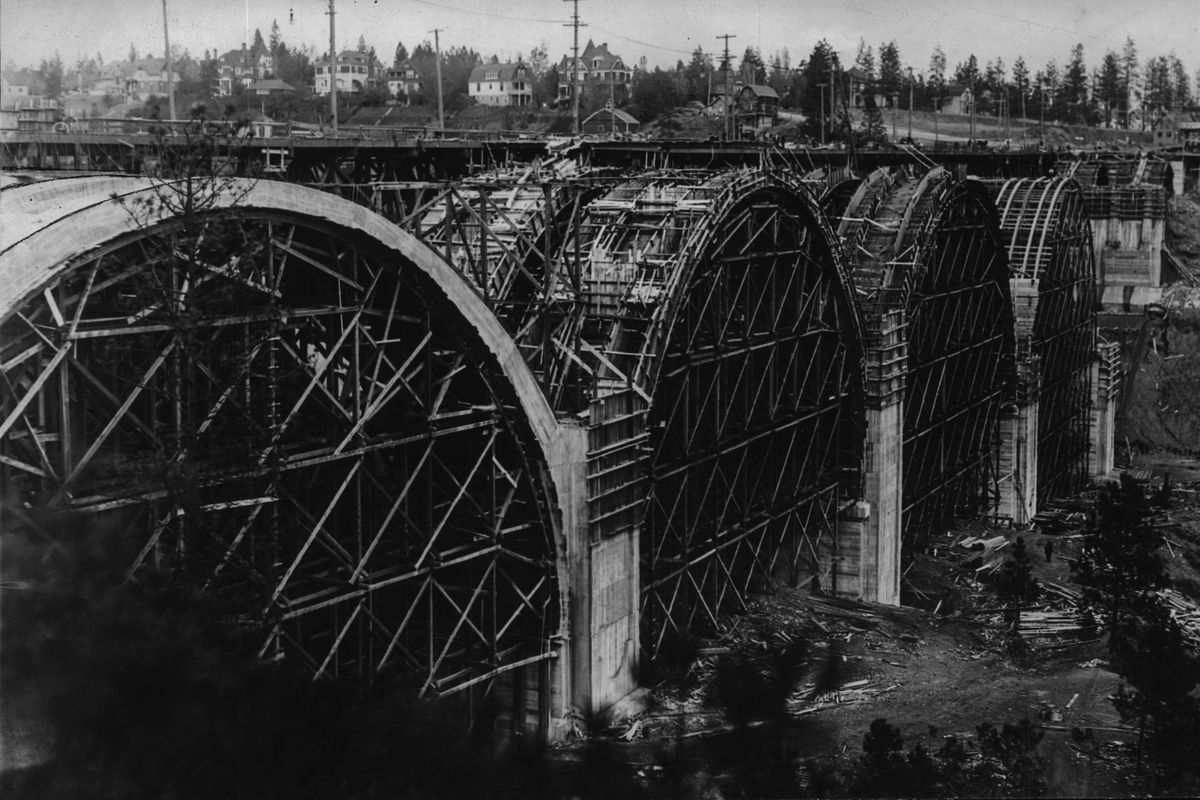Then and Now: Latah Creek Bridge

Bridges were needed to overcome the geography of the city of Spokane. Spans helped move traffic over rivers, creeks, gorges and canyons.
In 1911, less than a year after the city completed the Monroe Street Bridge, work began on the Sunset Boulevard Bridge, now better known as the Latah Creek Bridge, in West Spokane. Part of the impetus for the new structure was the importance of wheat farming in central Washington and growing traffic of a new form of transportation, automobiles, on the roadways that would eventually stretch to Seattle. The bridge originally was fitted with rails for interurban trains.
To build the bridge, rails were placed on the original wooden bridge and a cement plant was built at the east end. A gas-powered train moved cars of wet cement to the forms for each arch and spandrel.
Contractor J.E. Cunningham did the construction, overseen by J.R. Greene, an assistant city engineer, as construction supervisor. Because many of the same people were involved, the design was similar to the Monroe Street Bridge, with seven rounded, or Roman, arches with smaller spandrel arches above them. Unlike the other bridge, the arches were to be rounded, rather than a modern, flattened shape. Engineers said the number and shape of arches were dictated by the uneven, sandy valley floor below.
In “American Building Art,” Carl Condit wrote that the rounded shape “looks back to an older day in concrete arch design.”
The roadway is 45 feet wide with sidewalks on both sides. The total cost was $425,000.
The bridge carries several thousand cars, buses and trucks each day, though the bridge deck’s deterioration prompted the city to reduce traffic from four lanes to two several years ago.
Reports from city and bridge inspections say that that bridge arches are still strong, especially the center lanes which were designed to carry rail traffic.
“It was never designed for the loads of today’s driving public,” said Mark Serbousek of Spokane’s Street Department in 2012, adding, “It’s still safe to go over the top of.” He said the future of the bridge is likely to be a reconstruction like that done to the Monroe Street Bridge, but the bridge decking would probably have to be replaced.